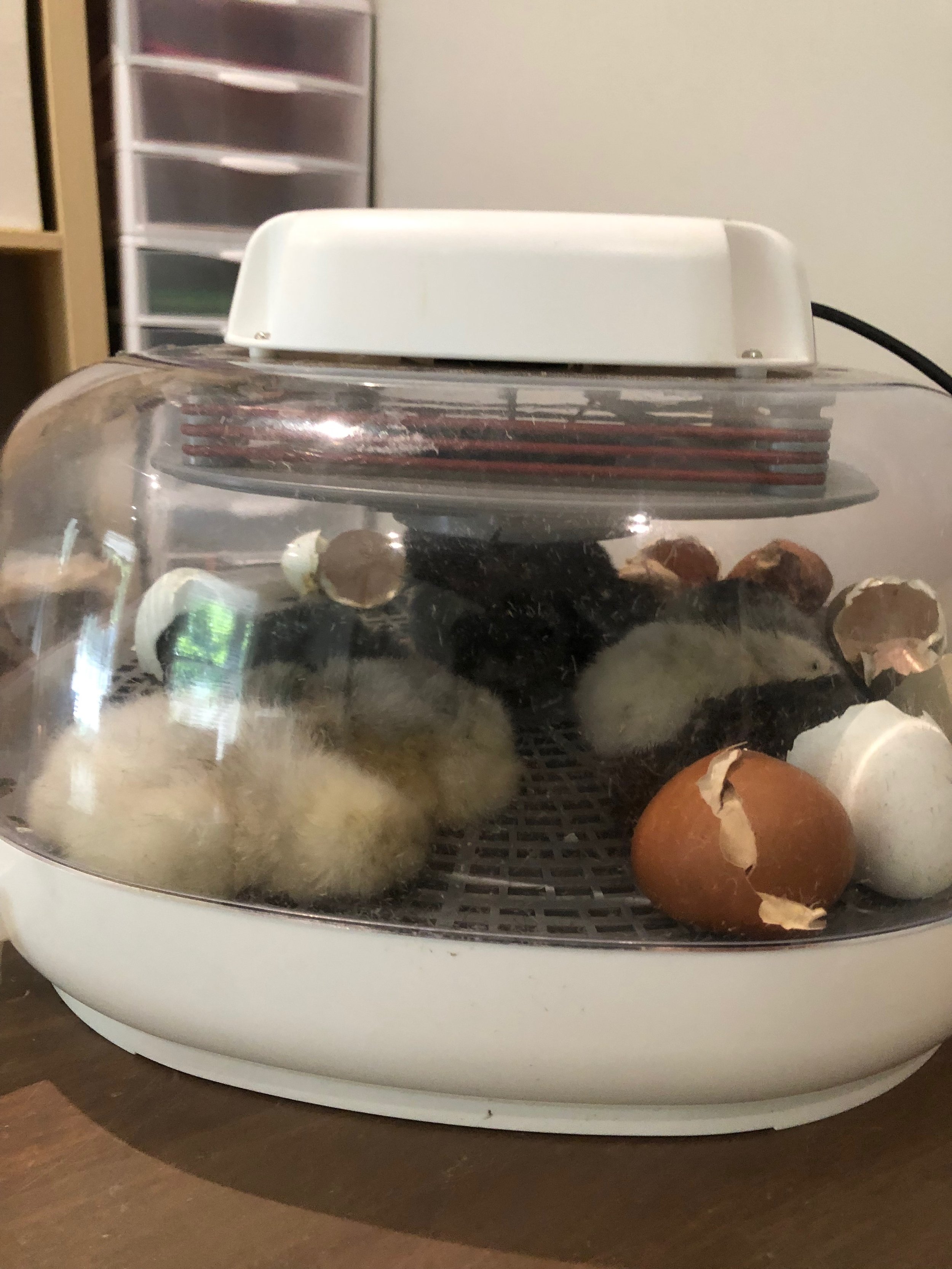Hatch
What an amazing and fluffy-cute week it's been, though sometimes stressful. It was a big responsibility, being in charge of those little eggs! Over the weekend we candled them all before they were placed in their final lockdown, when you stop turning them and keep the humidity up quite high to keep the shells softer for hatching. In the end, three of the dozen didn't develop so we had a little burial ceremony on Monday morning and the children helped dig a hole and then bury them. A few of us said some gratitude too.
Hatching began about midnight on Wednesday morning and finished around 1:30pm. The children even got to watch a chick emerge! Those little chicks worked so hard on their journey out of their egg. Amazingly, all 9 hatched and seem to be thriving, even in the hands of this newby. Once I compile the video footage, I'll share. Stay tuned while they grow and change and we continue to learn more about caring for them.
Hard to beat eggs hatching, but we also had a few good creek play days, including one where we saw a big patch of poison ivy. When I asked if anyone could explain how we know a plant is poison ivy, Anderson stepped right in and taught the rest of the children some great details to help them identify it. We'll continue practicing that essential skill for nature time around these parts. The children also searched for crocodiles in the creek, because the crayfish were being elusive.
Tuesday had us doing important chick-prep work preparing the brooder. A brooder is where the chicks live after the incubator, that is a safe and warm home for a number of weeks until they can go outside into a coop. The children helped clean everything with soapy water and then spray it all down with vinegar. They sanded wood blocks to keep the chicks' food and water up out of the pine bedding, and they helped set everything up once it was dry.
Let me tell you, there is no lack of children wanting to help with every project!
And with each project, pervasive disappointment when each child can't be the one chosen to do the thing needed, first, every time. But this is the learning that happens at school. This is why it's essential for children to play and interact with other children once they reach preschool age. The concept of sharing the jobs and spreading the joy comes hard when you are an eager 3-5 year old. It's par for the course as a preschool-aged teacher. Gentle reminders that others would also like to help can be heard throughout the day.
Why is this so hard for preschoolers? Because taking turns is a learned social skill and preschoolers don't get it right away. They need practice learning how to negotiate group settings and see others' perspectives. Playing games, playing in groups and taking turns in daily activities are all good practice.
Next week, we'll focus our morning meetings on a few social-emotional learning essentials as well as an experiment trying out First Days. Curious? Stay tuned!






